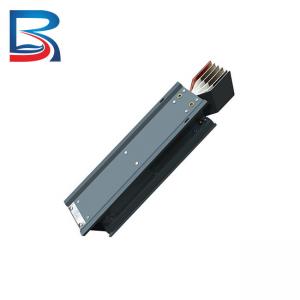Low Voltage High Voltage Mylar or Epoxy Insulated Feeder Bus Duct for Substation
Product Description
Materials
- Busducts are typically made of copper or aluminum bars that are enclosed in a protective housing made of insulating material.
- Copper busducts are more commonly used in high current applications due to their higher conductivity and better thermal performance, while aluminum busducts are often used in low current applications due to their lower cost.
- The insulating material used in busducts can vary depending on the application. Common materials include epoxy resin, PVC, and silicone.
Applications
- Busducts are used in a wide range of applications, including power generation, transmission, and distribution, as well as industrial and commercial buildings.
- In power generation applications, busducts are used to transmit power from generators to transformers and other equipment within a power plant.
- In transmission and distribution applications, busducts are used to transmit power over short distances between substations or other points in the electrical grid.
- In industrial and commercial buildings, busducts are used to distribute power to large electrical loads, such as HVAC systems, lighting, and machinery.
- Busducts are also commonly used in data centers to distribute power to servers and other network equipment.
- The choice of busduct material and design depends on factors such as the power rating, the application, and the environmental conditions in which the busduct will be installed.
Specification
| Conductor Material | Copper or Aluminum Bar |
| Rated Working Voltage | 415V or 690V |
| Rated Frequency | 50/60Hz |
| Protection Class | IP54/IP65/IP66 |
| Rated Operating Current | 250~6300A |
| Configuration | 3P3W, 3P4W, 3P5W |
| Surface treatment | Powder Coating Spray |
| Insulation | Mylar or Epoxy |
Marketing

Our business scope covers 6 continents and over 50 countries.
Payment and Delivery

Production Facilities




